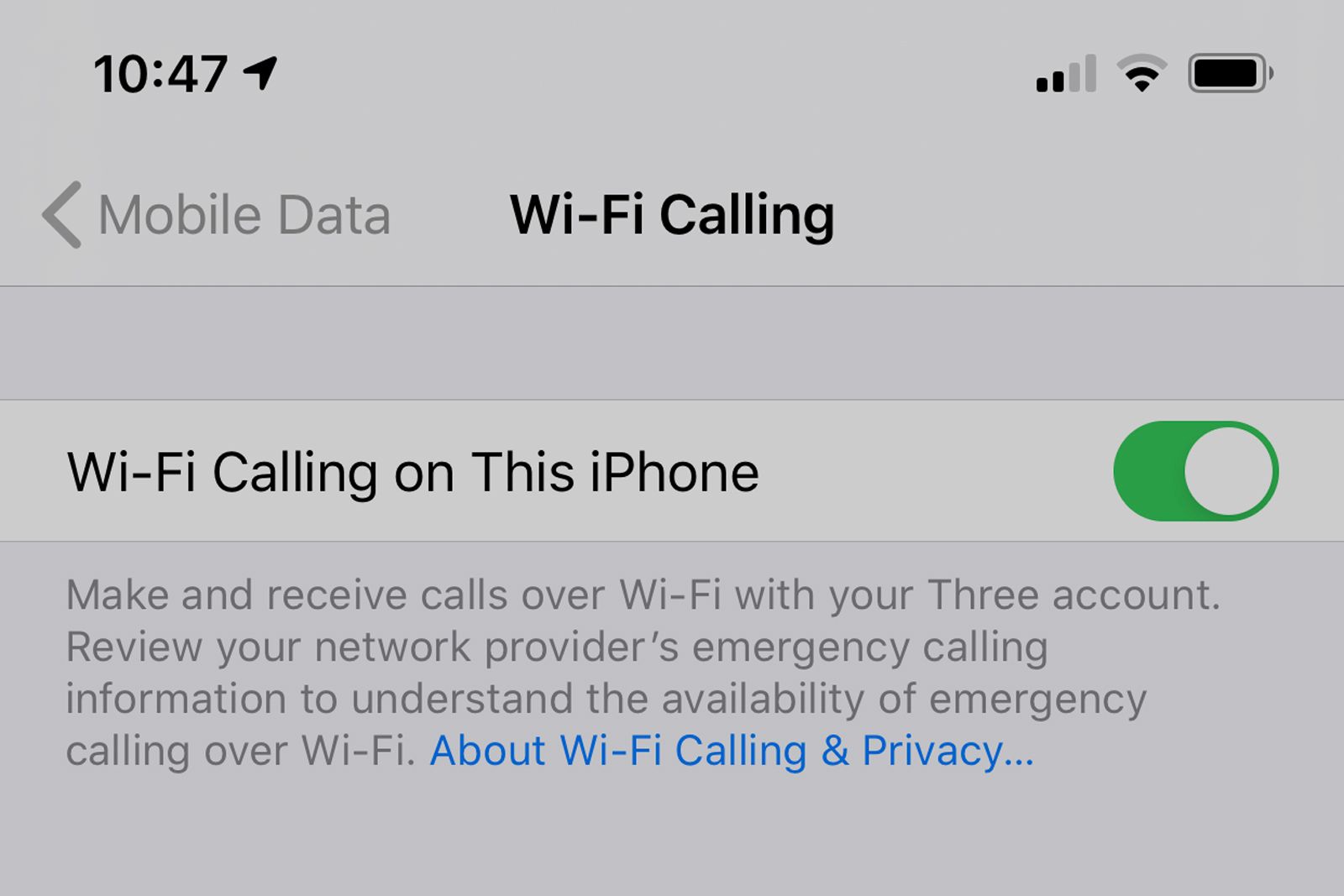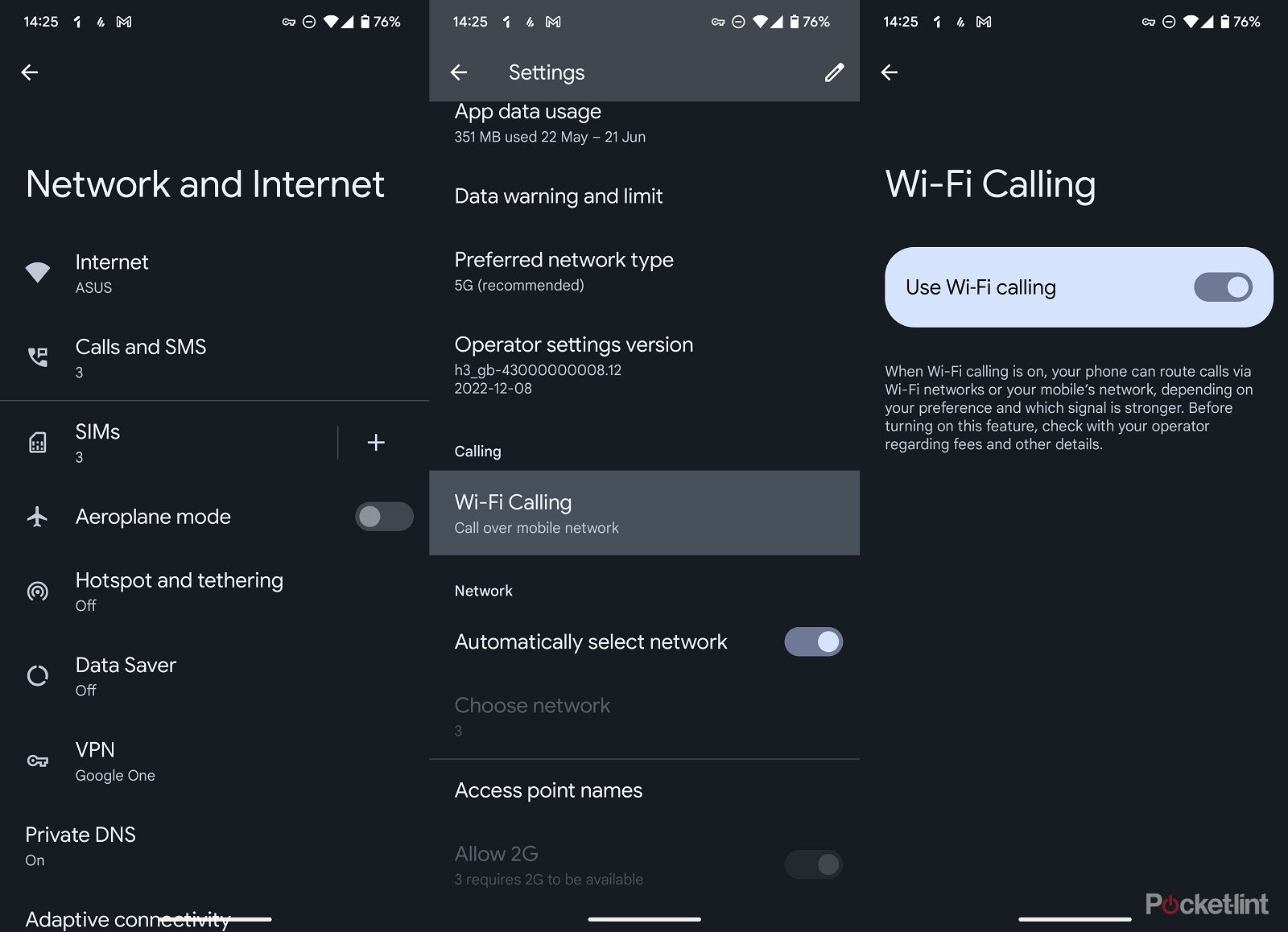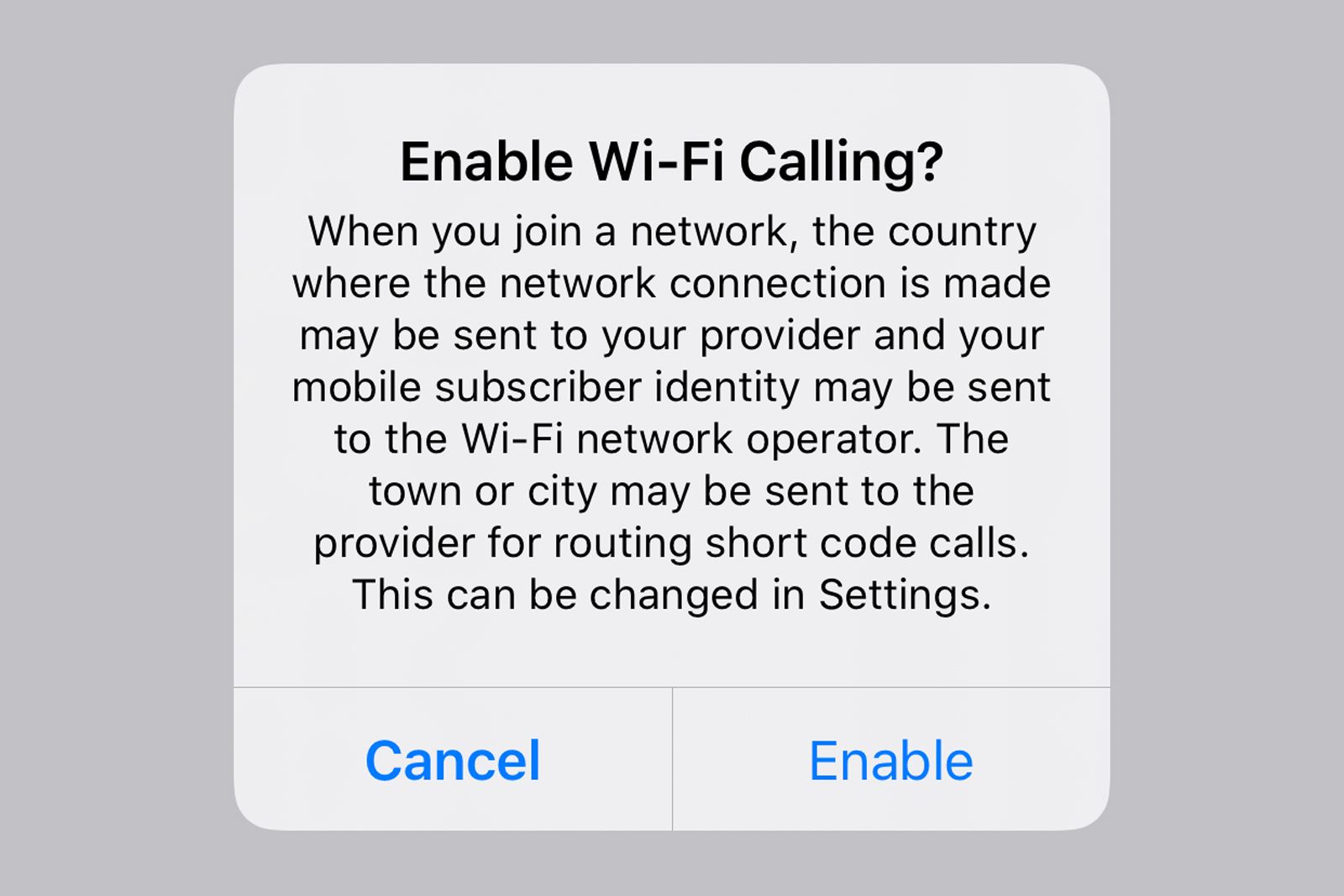Key Takeaways
- Wi-Fi Calling allows calls and texts over Wi-Fi, not apps like WhatsApp, which are separate services.
- Wi-Fi Calling automatically chooses the best network for clear signal – either Wi-Fi or mobile network.
- Wi-Fi Calling requires a network and phone that support it, but older phones may not be compatible.
With customers driving the demand for always-on connectivity, mobile phone networks turned to Wi-Fi to enable services that their own masts might not be able to provide.
That’s a good thing for those who want to remain connected in an area that perhaps doesn’t support a particular network, letting you take calls and get messages where the cellular network might not reach.
What is Wi-Fi Calling?
Wi-Fi Calling is exactly what you’re thinking: a feature that allows you to make and receive calls (and send text messages) over a Wi-Fi network instead of a traditional mobile network.
More specifically, with Wi-Fi Calling, cellular packets of a phone call or text message are transferred over the internet from your mobile device to your carrier (whilst utilizing higher data speeds than most cellular connections), then piped through the cellular network, and finally delivered to the intended recipient.
It’s a handy feature should you find yourself in an area with poor signal, because it lets you take advantage of Wi-Fi so your device is connected. That might be in rural areas with no network masts by using domestic Wi-Fi, or a basement nightclub that has Wi-Fi.
How does Wi-Fi calling work?
With Wi-Fi calling turned on your phone should automatically work out what the best network is and use that to ensure you have a good and clear signal. Your phone will select either the mobile network or Wi-Fi network depending on which is the strongest when you go to place the call.
You don’t need to download any extra apps to use Wi-Fi calling and the process for setting it up is fairly straightforward.
So in order to use Wi-Fi Calling you need two things:
- You need a network that supports it
- And you need a phone that supports it.
Most new phones support Wi-Fi calling – for example, the service is compatible with any iPhone launched since 2014.
Aren’t there apps that do the same thing?
Many popular apps – including messenger apps like WhatsApp, Facebook Messenger and Skype – allow you to send and receive calls/texts over Wi-Fi or your data network, but this isn’t Wi-Fi Calling.
When using an app like WhatsApp, your calling activity is kept strictly within the app itself and between users of that app. Your phone number is used to verify your identity, but it has nothing to do with the network at all, other than the data you use.
Similarly, Apple’s FaceTime and iMessage hand off calling and messages to internet services using the device’s data connection, but that’s an Apple service, rather than from your network.
In some cases, like iMessage, you get unlimited messaging and it’s seamlessly integrated for use between Apple device users, but it’s distinctly different from the proposition around network Wi-Fi Calling, where messages you send and calls you make will (probably) be deducted from your talk plan.
What happens when you get disconnected from Wi-Fi?
These days, if you have a modern, premium smartphone, it’s not necessarily an issue as long as you have 4G or 5G coverage and your carrier supports VoLTE (voice over LTE). It should seamlessly connect to the cellular network and continue the call.
However, not every phone and carrier in the world supports this. If yours doesn’t, or you’re in an area with poor mobile signal, you may find you get disconnected from the call.
So, if you start a call on Wi-Fi while at Starbucks, but then wander out of range, your mobile network won’t be able to pick up the call unless you have VoLTE (voice over LTE).
A lot of phones, particularly older models, use 2G or 3G to make calls and you cannot move a call to or from Wi-Fi. However, if or when your network supports VoLTE (also called 4G Voice) then you’ll be able to move that voice call from Wi-Fi back to the network without dropping your call. Nowadays, this is relatively common, so you may find there are no issues at all.
How to turn on Wi-Fi Calling
Go to your carrier’s website to find step-by-step guides to setting it up. Most of the time you’ll need to switch on an option under Settings, and perhaps notify your carrier that you plan to use Wi-Fi Calling.
Once you’re set-up, simply use your phone as normal. You should see a new symbol (see top image) at the top of your phone when using Wi-Fi Calling. Keep in mind the other person/recipient doesn’t need a device that supports Wi-Fi Calling (nor does he or she need to enable it with a carrier) for the feature to work.
How to turn on Wi-Fi calling on Android
Because Android devices vary so much, you might need to vary these instructions a little but the basics will be the same.
- Open the Phone app
- Tap the three-dot menu in the top corner
- Hit Settings, and then Wi-Fi Calling
- Toggle it on
Alternatively, head over to your phone’s settings, then look for “network and internet” settings and scroll until you find Wi-Fi calling and then click that to turn it on. You may also be able to find it quickly by just opening the settings and searching for “Wi-Fi calling” and the setting should pop up.
Setting up Wi-Fi calling on iOS
If you want to use Wi-Fi calling on your Apple iPhone then follow these steps:
- Go to Settings
- Tap on Phone
- Select Wi-Fi Calling
- Toggle the Wi-Fi Calling on This iPhone switch to the on position
- Confirm that you want to activate the feature by tapping Enable
As soon as Wi-Fi calling has been activated, if you’re connected to a Wi-Fi network your network name in the status bar should now say “Three WiFi Call” or similar depending on your network.
Any time you see that message in your status bar, your calls and text messages will be made over Wi-Fi, which usually means you’ll get better call quality.
Downsides of Wi-Fi calling
Wi-Fi calling sounds pretty great, doesn’t it? It’s not without some downsides though. It’s important to check how your cellular provider handles Wi-Fi calling and what’s included in your contract.
Wi-Fi calling uses your monthly allowance
You might think that because Wi-Fi calling is using your home broadband connection this won’t impact your monthly call allowance on your contract. Unfortunately, that’s not the case. Although your phone is using Wi-Fi to place the call it’s actually only being used to connect to the mobile phone network. So calls placed over Wi-Fi will use up your monthly call allowance in the same way as calls placed on a standard mobile signal.
The calls won’t use up your mobile data allowance but will impact your standard call allowance. Obviously, if your phone automatically switches between using Wi-Fi calling and the standard network this will also eat into your minutes. So don’t use Wi-Fi calling and assume you’re safe.
Poor quality calls over Wi-Fi
Just because your phone is using Wi-Fi calling doesn’t mean that the call quality will be perfect every time. If you’re using your phone in a location that doesn’t have great mobile signal but also doesn’t have great Wi-Fi either then the experience might not be perfect. This is especially the case if you’re using Wi-Fi calling in a public place over Wi-Fi that’s being shared with multiple people.
FAQ
Q: Which phones support Wi-Fi Calling?
Thankfully, just about every modern smartphone offers native support for Wi-Fi calling. All iPhone models released as of 2014 support the feature out of the box, with the iPhone 5S and iPhone 5C being the first iPhone models to do so. Likewise, all modern Samsung Galaxy and Google Pixel phones ship with support for Wi-Fi calling, as do most other Android phones.
Q: Which carriers support Wi-Fi Calling?
These days, all the major phone carriers offer support for Wi-Fi calling. In the United States, this includes big names like AT&T, T-Mobile, and Verizon. In Canada, the feature is supported by Bell, Rogers, and Telus, among others. For other carriers based in other countries, it’s advisable to check official websites for the most up-to-date support information.
Trending Products

Cooler Master MasterBox Q300L Micro-ATX Tower with Magnetic Design Dust Filter, Transparent Acrylic Side Panel, Adjustable I/O & Fully Ventilated Airflow, Black (MCB-Q300L-KANN-S00)

ASUS TUF Gaming GT301 ZAKU II Edition ATX mid-Tower Compact case with Tempered Glass Side Panel, Honeycomb Front Panel, 120mm Aura Addressable RGB Fan, Headphone Hanger,360mm Radiator, Gundam Edition

ASUS TUF Gaming GT501 Mid-Tower Computer Case for up to EATX Motherboards with USB 3.0 Front Panel Cases GT501/GRY/WITH Handle

be quiet! Pure Base 500DX ATX Mid Tower PC case | ARGB | 3 Pre-Installed Pure Wings 2 Fans | Tempered Glass Window | Black | BGW37

ASUS ROG Strix Helios GX601 White Edition RGB Mid-Tower Computer Case for ATX/EATX Motherboards with tempered glass, aluminum frame, GPU braces, 420mm radiator support and Aura Sync













